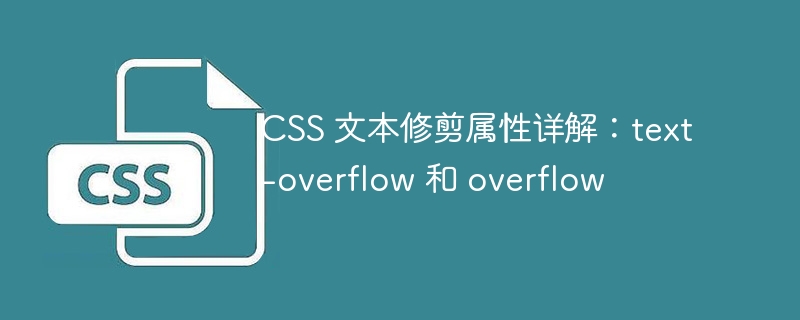

Detailed explanation of CSS text trimming properties: text-overflow and overflow
In web design, text is one of the important components of page content. When the text content is too long, it often appears that the display is incomplete. In this case, you need to use the text trimming attribute to deal with it. In CSS, commonly used text trimming properties include text-overflow and overflow. This article will introduce the usage and effects of these two properties in detail and provide specific code examples.
The text-overflow property is used to control how text content that exceeds the container is displayed. Commonly used attribute values are:
Code example:
.container {
width: 200px;
white-space: nowrap;
overflow: hidden;
text-overflow: ellipsis;
}In the above example, first set the width of a container to 200px, and then set the white-space attribute to nowrap, which ensures that the text does not wrap. Then use overflow: hidden to hide the overflow part, and finally use text-overflow: ellipsis to display the ellipsis. When the text content exceeds the width of the container, ellipses will automatically appear to indicate truncation of the text.
The overflow property is used to control the display mode when the content in the container overflows. Commonly used attribute values are:
Code example:
.container {
width: 200px;
height: 200px;
overflow: hidden;
}In the above example, set the width and height of a container to 200px respectively, and then use overflow: hidden to hide the overflow content. When the content in the container exceeds the width or height of the container, it will be hidden.
To sum up, text-overflow and overflow are two commonly used CSS properties, which are used to handle the truncation of text content and the display mode when the container overflows. They can help us better control the display of text and containers and improve the quality of web design. In practical applications, these attributes can be flexibly used according to needs to achieve the desired effects.
The above is a detailed analysis of the CSS text trimming properties text-overflow and overflow. I hope it will be helpful to your web design work.
The above is the detailed content of Detailed explanation of CSS text trimming properties: text-overflow and overflow. For more information, please follow other related articles on the PHP Chinese website!